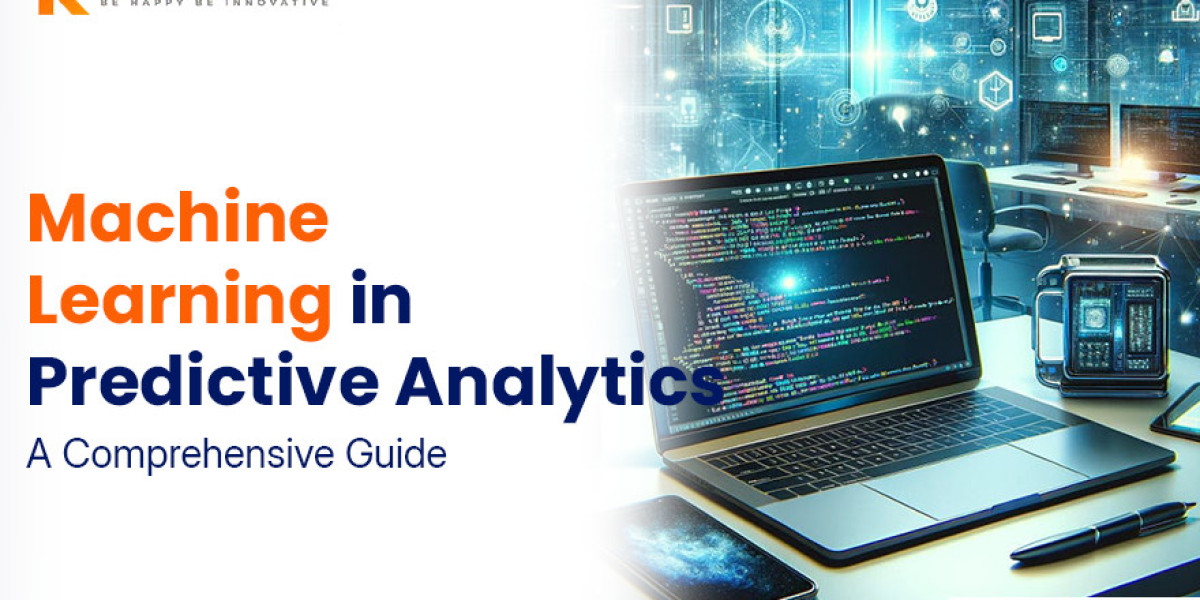Predictive analytics has revolutionized the way businesses make decisions, forecast trends, and optimize operations. At the heart of predictive analytics lies machine learning (ML), a technology that enables systems to learn from data and make accurate predictions. This guide explores how machine learning enhances predictive analytics, key algorithms, applications, and challenges. Additionally, we highlight some of the top AI companies in India leading the way in artificial intelligence development.
What is Predictive Analytics?
Predictive analytics involves using historical data, statistical algorithms, and ML techniques to predict future outcomes. It helps organizations anticipate trends, detect anomalies, and improve decision-making processes.
Key Components of Predictive Analytics:
Data Collection – Gathering structured and unstructured data from multiple sources.
Data Preprocessing – Cleaning, transforming, and structuring data for analysis.
Model Selection – Choosing the right ML algorithm for prediction.
Training & Testing – Splitting data to build and validate models.
Deployment & Monitoring – Implementing the model and refining it over time.
How Machine Learning Enhances Predictive Analytics
Traditional predictive analytics relied on statistical models, but ML significantly improves accuracy and scalability by learning patterns and adapting to new data. ML automates feature selection, reduces human bias, and enhances decision-making with minimal manual intervention.
Machine Learning Techniques Used in Predictive Analytics
Supervised Learning – Uses labeled data to predict future outcomes.
Example Algorithms: Linear Regression, Decision Trees, Random Forest, Neural Networks.
Use Case: Predicting customer churn in subscription-based businesses.
Unsupervised Learning – Identifies hidden patterns in data.
Example Algorithms: K-Means Clustering, Principal Component Analysis (PCA), Autoencoders.
Use Case: Market segmentation based on customer behavior.
Reinforcement Learning – Learns optimal actions through trial and error.
Use Case: Dynamic pricing strategies in e-commerce.
Applications of Machine Learning in Predictive Analytics
Machine learning is widely applied across industries to enhance predictive analytics. Below are some key applications:
1. Healthcare
Disease prediction using patient records.
Early detection of life-threatening conditions.
2. Finance
Credit risk assessment and fraud detection.
Stock market prediction using historical trends.
3. Retail & E-commerce
Personalized recommendations based on customer purchase history.
Inventory forecasting to prevent stockouts or overstocking.
4. Marketing & Customer Analytics
Customer segmentation for targeted marketing.
Sentiment analysis from social media interactions.
5. Manufacturing & Supply Chain
Predictive maintenance to reduce equipment downtime.
Demand forecasting for efficient supply chain management.
Top AI Companies in India Driving Predictive Analytics
India is home to several artificial intelligence development companies that are making significant strides in ML-powered predictive analytics. Some of the leading AI companies in India include:
Tata Consultancy Services (TCS) – AI-powered solutions for industries like finance, healthcare, and retail.
Infosys – AI and automation-driven analytics for business optimization.
Wipro – Advanced AI-driven predictive analytics for enterprise solutions.
HCL Technologies – AI-driven innovation in manufacturing and supply chain management.
Zensar Technologies – AI-powered digital transformation services.
These companies are at the forefront of AI advancements, helping businesses leverage predictive analytics for improved decision-making and operational efficiency.
Challenges in Machine Learning for Predictive Analytics
Despite its advantages, ML in predictive analytics faces several challenges:
Data Quality Issues – Incomplete or biased data can lead to inaccurate predictions.
Model Interpretability – Complex ML models like deep learning are often seen as “black boxes.”
Computational Costs – Training large ML models requires significant computational power.
Changing Data Trends – ML models may become outdated and require continuous retraining.
Privacy & Security Concerns – Handling sensitive data raises compliance and ethical issues.
Future Trends in Machine Learning and Predictive Analytics
The field of predictive analytics is rapidly evolving, with emerging trends including:
Automated Machine Learning (AutoML) – Simplifying model selection and tuning.
Explainable AI (XAI) – Improving transparency and trust in ML predictions.
Edge AI – Running ML models on edge devices for real-time analytics.
Federated Learning – Enabling privacy-preserving ML on decentralized data.
Quantum Computing – Revolutionizing ML capabilities with unprecedented processing power.
Conclusion
Machine learning has transformed predictive analytics, enabling businesses to make data-driven decisions with unprecedented accuracy. By leveraging advanced ML techniques, organizations can optimize operations, enhance customer experiences, and drive innovation. Additionally, AI companies in India continue to push the boundaries of artificial intelligence development, offering cutting-edge solutions for predictive analytics. However, overcoming data quality issues, ensuring model interpretability, and keeping up with evolving trends are crucial to fully unlocking the potential of ML-driven predictive analytics.







